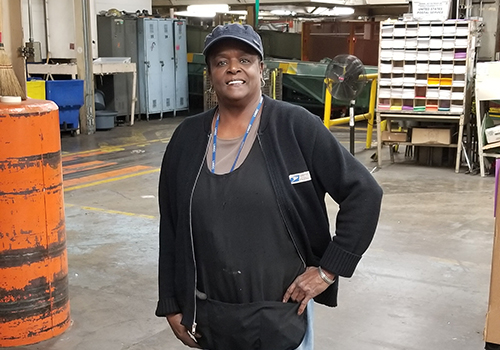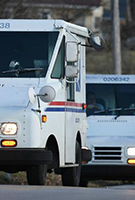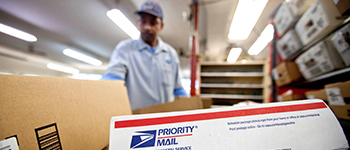
Lorem Ipsum is simply dummy text of the printing and typesetting industry. Lorem Ipsum has been the industry's standard dummy text ever since the 1500s, when an unknown printer took a galley of type and scrambled it to make a type specimen book. It has survived not only five centuries, but also the leap into electronic typesetting, remaining essentially unchanged. It was popularised in the 1960s with the release of Letraset sheets.




Lorem Ipsum is simply dummy text of the printing and typesetting industry. Lorem Ipsum has been the industry's standard dummy text ever since the 1500s, when an unknown printer took a galley of type and scrambled it to make a type specimen book.

The United States Postal Service (USPS; also known as the Post Office, U.S. Mail, or Postal Service) is an independent agency of the executive branch of the United States federal government
responsible for providing postal service in the United States, including its insular areas and associated states. It is one of the few government agencies explicitly authorized by the United States Constitution.
The USPS traces its roots to 1775 during the Second Continental Congress, when Benjamin Franklin was appointed the first postmaster general.

The Post Office Department was created in 1792 from Franklin's operation. It was elevated to a cabinet-level department in 1872, and was transformed
by the Postal Reorganization Act of 1970 into the United States Postal Service as an independent agency.
The USPS as of 2017 has 644,124 active employees in 2014.
The USPS is legally obligated to serve all Americans, regardless of geography, at uniform price and quality.
The USPS has exclusive access to letter boxes marked "U.S. Mail" and personal letterboxes in the United States, but now has to compete against private package delivery services,
such as United Parcel Service, FedEx, and Amazon. Since the early 1980s, many of the direct tax subsidies to the Post Office, with the exception of subsidies for costs
associated with the disabled and overseas voters, have been reduced or eliminated in favor of indirect subsidies, in addition to the advantages associated
with a government-enforced monopoly on the delivery of first-class mail.

Since the 2006 all-time peak mail volume, after which Congress passed
the Postal Accountability and Enhancement Act which mandated that $5.5 billion per year be paid to fully prefund employee retirement health benefits,
revenue dropped sharply due to recession-influenced declining mail volume, prompting the postal service to look to other sources of revenue while cutting costs to reduce its budget deficit.
 Facts and Brief History of USPS
Facts and Brief History of USPS
On March 18, 1970, postal workers in New York City—upset over low wages and poor working conditions, and emboldened by the Civil Rights Movement—organized a strike against the United States government.
The strike initially involved postal workers in only New York City, but it eventually gained support of over 210,000 United States Post Office Department workers across the nation.

While the strike ended without any concessions from the Federal government, it did ultimately allow for postal worker unions and the government to negotiate a contract which gave the unions most of what they wanted,
as well as the signing of the Postal Reorganization Act by President Richard Nixon on August 12, 1970. The Act replaced the cabinet-level Post Office Department with a new federal agency,
the United States Postal Service, and took effect on July 1, 1971. The United States Postal Service employs some 617,000 workers, making it the third-largest civilian employer in the United States
behind the federal government and Walmart.
In a 2006 U.S. Supreme Court decision, the Court noted: "Each day, according to the Government's submissions here, the United States Postal Service
delivers some 660 million pieces of mail to as many as 142 million delivery points."
As of 2017, the USPS operates 30,825 post offices and locations in the U.S., and delivers 149.5 billion pieces of mail annually.
The USPS operates one of the largest civilian vehicle fleets in the world,
with an estimated 227,896 vehicles, the majority of which are the easily identified Chevrolet/Grumman LLV (long-life vehicle), and the newer Ford/Utilimaster FFV (flex-fuel vehicle),
originally also referred to as the CRV (carrier route vehicle).
It is by geography and volume the globe's largest postal system, delivering 47% of the world's mail.
For every penny increase in the national average price of gasoline, the USPS spends an extra US$8 million per year to fuel its fleet.
187.7 Million First Class Mail
Each day the Postal Service processes and delivers 187.8 million pieces of First-Class Mail.
75,000 Letter Carriers on Foot
More than 75,000 letter carriers drive to neighborhoods and then deliver the mail on foot. Nearly 7,000 carriers deliver mail entirely on foot -- the USPS Fleet of Feet. Mail is delivered
by bicycle on select routes in Arizona and Florida, reducing emissions and saving fuel.



 3.5 Million Emails
3.5 Million Emails
With one of the largest corporate email systems, the Postal Service handles more than 3.5 million legitimate emails a day delivered to more than 222,000 email accounts.
276,125 Money Orders
The Postal Service issues 276,125 money orders daily.
$234 Million in Revenue
The Postal Service generates, on average, $234 million in revenue per day.

20.2 Million Each Hour
On average, the Postal Service processes 20.2 million mailpieces each hour, 336,649 each minute and 5,611 each second.
One Million in Online Sales
The Postal Service brings in $993,400 from online stamp and retail sales at The Postal Store at usps.com.
121,452 Address Change Daily
The Postal Service processes 121,452 address changes daily.
$165.6 Million in Salaries Daily
Each day, $165.6 million is paid to USPS employees in salaries and benefits.



 484.8 Million Mailpieces Each Day
484.8 Million Mailpieces Each Day
The Postal Service processes and delivers 484.8 million mailpieces each day.
$0 Tax Dollars
Zero tax dollars used. The Postal Service receives NO tax dollars for operating expenses
and relies on the sale of postage, products and services to fund its operations.
Zero Tax Dollars Used
The Postal Service receives NO tax dollars for operating expenses and relies on the sale of postage, products and services to fund its operations.
Security
U.S. Mail is protected by more than 200 federal laws enforced by the Postal Inspection Service, one of the nation's oldest law enforcement agencies.
Vehicles
The Postal Service has more than 232,000 vehicles, one of the largest civilian fleets in the world. New next-generation vehicles will have improved ergonomics, safety features, fuel efficiency and design flexibility.



 Affordability
Affordability
For 55 cents, anyone can send a letter, regardless of geographic location, to anywhere in the United States.
All Heart
The Postal Service is at the core of the $1.4 trillion U.S. mailing industry that employs more than 7.5 million people.
Competition and Collaboration
The Postal Service both competes and collaborates with the private sector. UPS and FedEx pay the Postal Service to deliver hundreds of millions of their ground packages, and USPS pays UPS and FedEx for air transportation.
Global Business
The Postal Service processes and delivers 47 percent of the world's mail and is constantly innovating to make customer experiences better.
Veterans
The Postal Service employs more than 100,000 military veterans and is one of the largest employers of veterans in the country.



 Social Responsibility
Social Responsibility
From facilitating the nation's largest one-day food drive to addressing dog bites, educating customers on consumer protection and delivering holiday cheer to those in need, the Postal Service supports communities.
Heros
Postal employees regularly go beyond the call of duty to protect the lives of customers they serve, including older and disabled customers through the Carrier Alert Program.
In fiscal year 2018, the Postal Service recognized 243 heroic employees.
Dependable
The Postal Service is the only organization in the country that has the resources, network infrastructure and logistical capability to regularly deliver to every residential and business address in the nation.
Retail Giant
The Postal Service has the nation's largest retail network — bigger than McDonald’s, Starbucks and Walmart combined, domestically.

The museum is located across the street from Union Station, in the building that once served as the main post office of Washington, D.C. from 1914,
when it was constructed, until 1986.
The building was designed by the Graham and Burnham architectural firm, which was led by Ernest Graham following the death of Daniel Burnham in 1912.
The building in which the museum is housed also serves as the headquarters of the United States Department of Labor's Bureau of Labor Statistics,
as well as a data center for the United States Senate. In 2005, the museum acquired John Lennon's childhood stamp collection.
From June 2015 until December 2018 the museum displayed the 1856 British Guiana One-Cent Magenta, the world's most valuable stamp, which sold for nearly $10 million.
In September 2009, the museum received an $8 million gift from investment firm founder William H. Gross to help finance an expansion project.
The museum now hosts the William H. Gross Stamp Gallery named in his honor.



Informed Delivery® is a feature offered by the United States Postal Service® (USPS®) whereby consumers can digitally preview incoming mail and manage packages scheduled to arrive soon.
Consumers that sign up for Informed Delivery can digitally preview their mail and manage packages scheduled to arrive soon via email notification, online dashboard, or mobile app.
Users also have the ability to interact with digital content provided by business mailers (e.g., special offers, related links) directly from Informed Delivery.
Exterior images are only provided for letter-size mailpieces that are processed through USPS automated equipment.
Sign Up for Free

Some mailpieces (e.g., catalogues, magazines, larger envelopes) are not imaged by USPS automated equipment and will not appear in Informed Delivery notifications.
Users can also receive USPS Tracking® updates for incoming packages, provide delivery instructions, manage notifications, and schedule redelivery directly from Informed Delivery.

The U.S. Postal Service reported operating revenue of $71.1 billion for fiscal year 2019 (October 1, 2018 - September 30, 2019), an increase of $514 million compared to the prior year.
The higher revenues were driven largely by price increases and continued growth in the Shipping and Packages business, where revenue increased $1.3 billion, or 6.1 percent,
which more than offset revenue declines in First-Class and Marketing Mail as a result of declining volumes in that segment of its business.
The total volume of mail and packages delivered during the year declined by 3.8 billion pieces or 2.6 percent, driven largely by First-Class Mail declines of 1.8 billion pieces,
or 3.1 percent, and Marketing Mail declines of 1.6 billion pieces, or 2.1 percent. Package volume grew slightly at 16 million pieces, or 0.3 percent,
continuing a multi-year trend of declining mail volumes and increasing package volumes, although package volume growth slowed considerably during the year.
